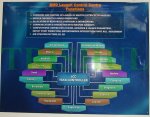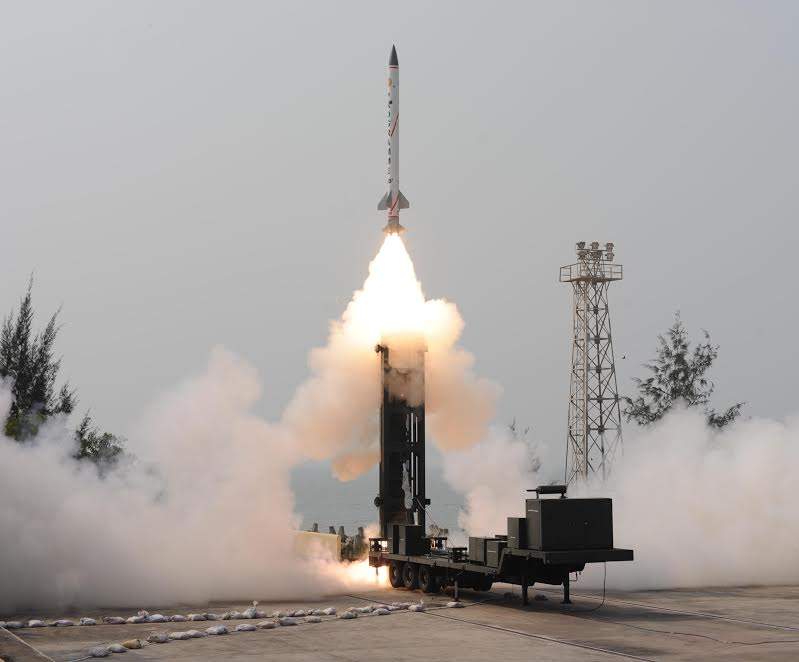India's homegrown supersonic interceptor takes down ballistic missile, landmark victory for DRDO
BHUBANESWAR: India's attempts to develop a robust multi-layered Ballistic Missile Defence (BMD) shield got further boost on Thursday when a homegrown supersonic interceptor successfully destroyed an incoming ballistic missile over the Bay of Bengal. The missile was intercepted in the endo-atmospheric region -- at an altitude of 15 km.
Defence sources said the low altitude Advanced Area Defence (AAD) interceptor missile fired from the Abdul Kalam Island off Odisha coast zoomed in on the target, which was launched from the launching complex - III of the Integrated Test Range (ITR) also based in the island.
"The radar of the defense system detected the incoming missile, tracked it and provided the command to launch the interceptor missile. The mission was brilliant as the interceptor missile achieved a direct hit, paving the way for its early deployment in the armed forces" said a defense official.
"The Fibre Optic Gyro (FOG) based INS in the interceptor, onboard computers, guidance systems, actuation systems and the critical Radio Frequency (RF) seekers used for the terminal phase all performed excellently. The launch has proved the BMD prowess of the country," the official added.
The entire event, including the engagement and destruction of the ballistic missile, was tracked by a number of electro-optical tracking systems using infrared imagery.
Indigenously developed by DRDO, the AAD interceptor is a single-stage missile powered by solid propellants. It is 7.5 metres tall and weighs around 1.2 tonnes. It had a diameter of less than 0.5 metre. The target missile was however fuelled by liquid propellants. It was 11 metres tall and weighs five tonnes and had a diameter of one metre.
With the success, the Defence Research and Development Organisation (DRDO) has ended its 'Mission 2017' on a happy note. This was the second successful test of ballistic missile defense, this year.
The DRDO has developed both high-altitude and low-altitude anti-ballistic missiles. While the first phase seeks to destroy the incoming enemy missiles in the exo-atmospheric region (outside the atmosphere), the second phase envisages killing enemy missiles of more than 2,000 km range within the endo-atmospheric (inside the atmosphere) region.
BHUBANESWAR: India's attempts to develop a robust multi-layered Ballistic Missile Defence (BMD) shield got further boost on Thursday when a homegrown supersonic interceptor successfully destroyed an incoming ballistic missile over the Bay of Bengal. The missile was intercepted in the endo-atmospheric region -- at an altitude of 15 km.
Defence sources said the low altitude Advanced Area Defence (AAD) interceptor missile fired from the Abdul Kalam Island off Odisha coast zoomed in on the target, which was launched from the launching complex - III of the Integrated Test Range (ITR) also based in the island.
"The radar of the defense system detected the incoming missile, tracked it and provided the command to launch the interceptor missile. The mission was brilliant as the interceptor missile achieved a direct hit, paving the way for its early deployment in the armed forces" said a defense official.
"The Fibre Optic Gyro (FOG) based INS in the interceptor, onboard computers, guidance systems, actuation systems and the critical Radio Frequency (RF) seekers used for the terminal phase all performed excellently. The launch has proved the BMD prowess of the country," the official added.
The entire event, including the engagement and destruction of the ballistic missile, was tracked by a number of electro-optical tracking systems using infrared imagery.
Indigenously developed by DRDO, the AAD interceptor is a single-stage missile powered by solid propellants. It is 7.5 metres tall and weighs around 1.2 tonnes. It had a diameter of less than 0.5 metre. The target missile was however fuelled by liquid propellants. It was 11 metres tall and weighs five tonnes and had a diameter of one metre.
With the success, the Defence Research and Development Organisation (DRDO) has ended its 'Mission 2017' on a happy note. This was the second successful test of ballistic missile defense, this year.
The DRDO has developed both high-altitude and low-altitude anti-ballistic missiles. While the first phase seeks to destroy the incoming enemy missiles in the exo-atmospheric region (outside the atmosphere), the second phase envisages killing enemy missiles of more than 2,000 km range within the endo-atmospheric (inside the atmosphere) region.
















 President of India✔@rashtrapatibhvn
President of India✔@rashtrapatibhvn

 .
.